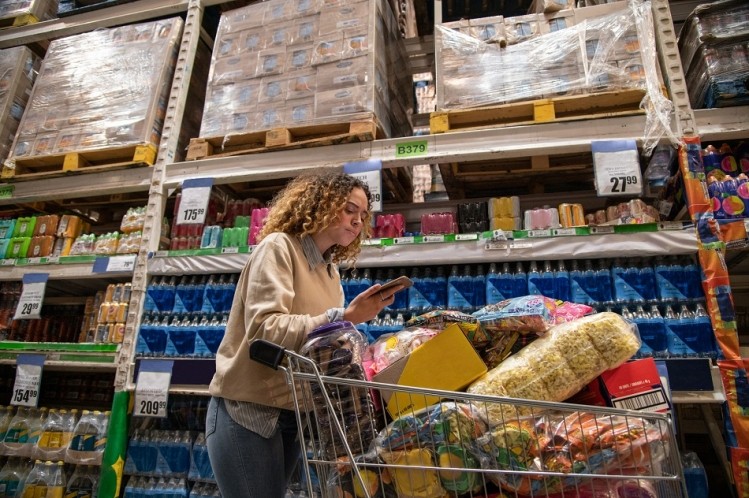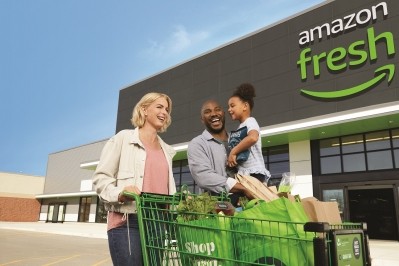Report: Has grocery e-commerce hit its glass ceiling?

In May 2022, Dunnhumby surveyed a nationally representative sample of over 2,000 US grocery shoppers to uncover shopper behavior and sentiments. In its latest Consumer Trends Tracker it takes a look at the growth and future of the e-commerce grocery market.
At the height of the pandemic, the share of shoppers purchasing groceries online increased from 43% to 56% in the fall of 2020, according to Dunnhumby.
Digital’s share of total grocery sales more than doubled during the pandemic, but nearly all online shoppers still buy in brick and mortar, where roughly 90+% of all customer dollars are still spent, suggesting that now that consumers can feel safe shopping in-store, their online shopping behavior will continue to cool.
"While Covid helped increase the share of online grocery, the lion’s share of grocery dollars is still spent in brick and mortar and will continue to be, far into the future," said Dunnhumby.
Additionally, grocery web visits have trended down since March 2021 right around the time vaccines were made public, according to Dunnhumby.
"Let’s not forget that online grocery has been around for more than 20 years and it took the fear of death to get people to shop for groceries online in a meaningful way," noted Dunnhumby.
To sum up consumers' general feelings towards shopping for their groceries online, Dunnhumby cites an article from The New York Times titled "We Can't Predict the Grocery Future," in which author Shira Ovide writes, “My wishy-washy analysis is that Americans haven’t fallen head over heels for buying bananas over the internet, but we aren’t rejecting it, either.”
Amazon's grocery standing
Using Amazon as an example of this uncertain future for the online grocery sector, Dunnhumby wrote that its share in online grocery dropped from around 65% five years ago to roughly 45% today as other retailers stepped up to the plate with their e-commerce capabilities.
"Despite glowing customer reviews and financial success, Amazon isn’t as secure as you might think. The rest of the grocery market has been growing faster than Amazon," the report stated.
And Amazon is also taking into account the importance of brick-and-mortar stores when it comes to grocery shopping by continuing to open more physical Amazon Fresh stores, with 24 locations currently under construction.
Consumer sentiment: Are online shoppers struggling more financially?
From its research, Dunnhumby found that while omnichannel shoppers spend 1.5x more on groceries than consumers who shop only in-store, they are more likely to report feeling financially strapped.
“What really stands out in this report is that while 60% of all households with children are doing some of their shopping online and despite being higher earners on average than brick and mortar only shoppers, they are struggling more financially and some reported they have had to skip or cut back on meals,” said Grant Steadman, President for North America at Dunnhumby.
Dunnhumby hypothesizes that omnichannel shoppers are balancing multi-person households including children and pets therefore making household budgets tighter and less predictable.
“This indicates an evolution from the orthodoxy that the online and omnichannel shoppers value convenience above all and are not price sensitive. This study suggest that is not always the case.”
Expanding strategically in e-commerce
While Dunnhumby highlights several limiting factors of the online grocery sector, it's not advising that retailers throw in the towel expanding their e-commerce capabilities.
"In fact, we generally argue for carefully expanding these capabilities with a focus on customer profitability rather than simply short-term channel profitability," said Dunnhumby, adding the retailers should focus on their particular strengths and tailor their approach online retail accordingly.
"Personalize the total omnichannel experience, using promotions, media, below the line pricing, communications, and story layout. If you are a discounter like Aldi, you’ve already tightly coordinated your value chain to drive costs out of your system, so low prices will always be your advantage.
"If you are a specialty grocer like Trader Joe’s, Sprouts, Fresh Thyme or The Fresh Market, your perishable quality and in-store experience will always be your advantage. From an omnichannel perspective, building out a focus on RTE delivery and related foodie-focused in-store experiences may be your most ownable, differentiated extension."
















